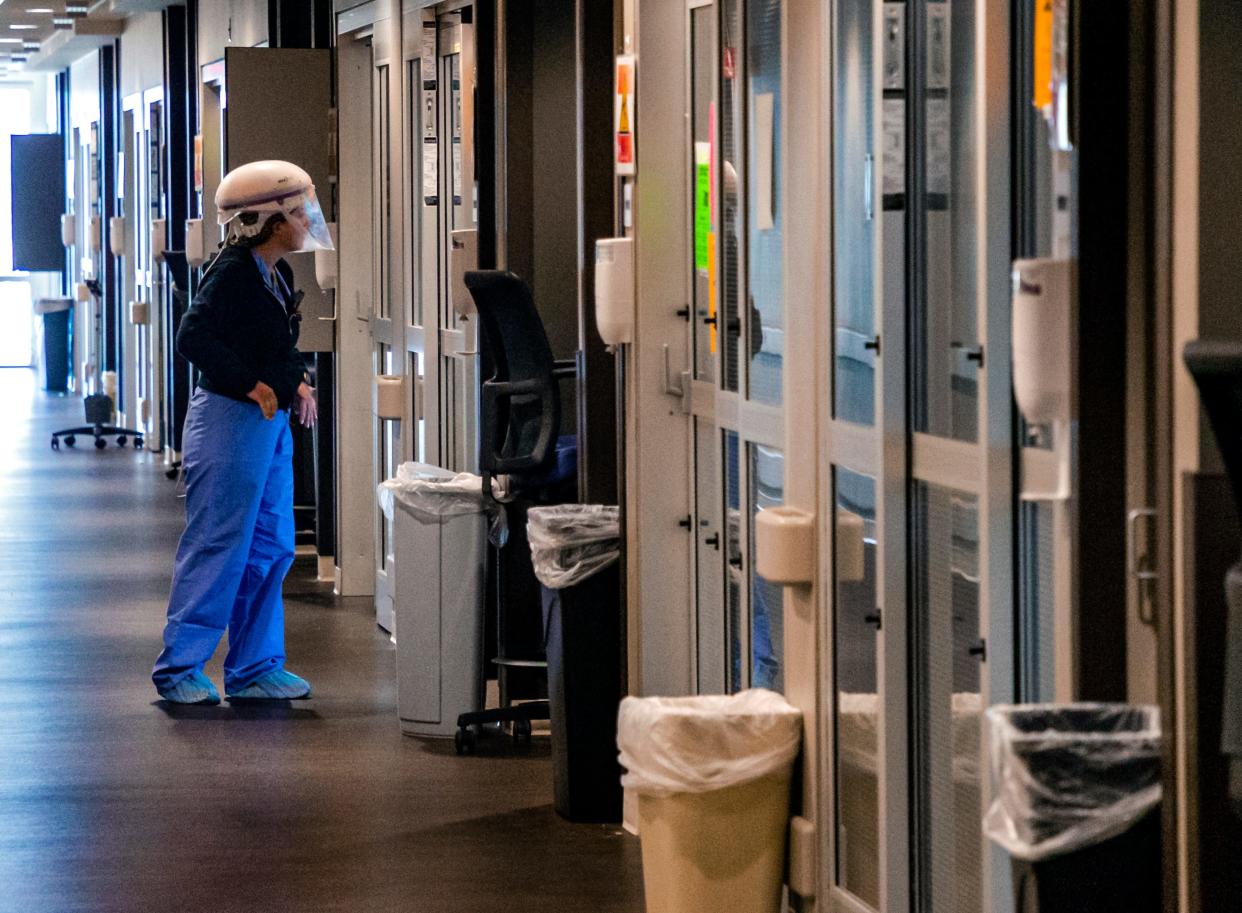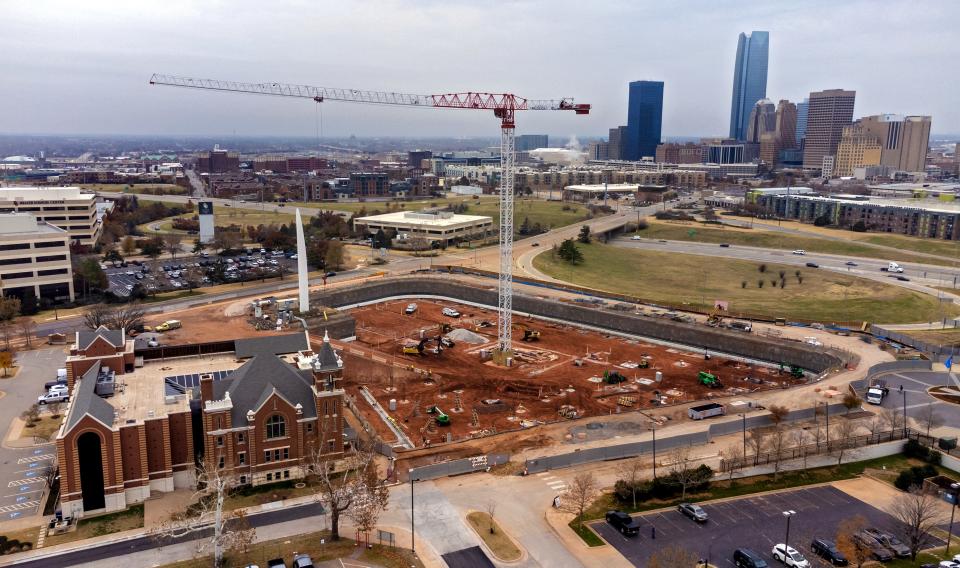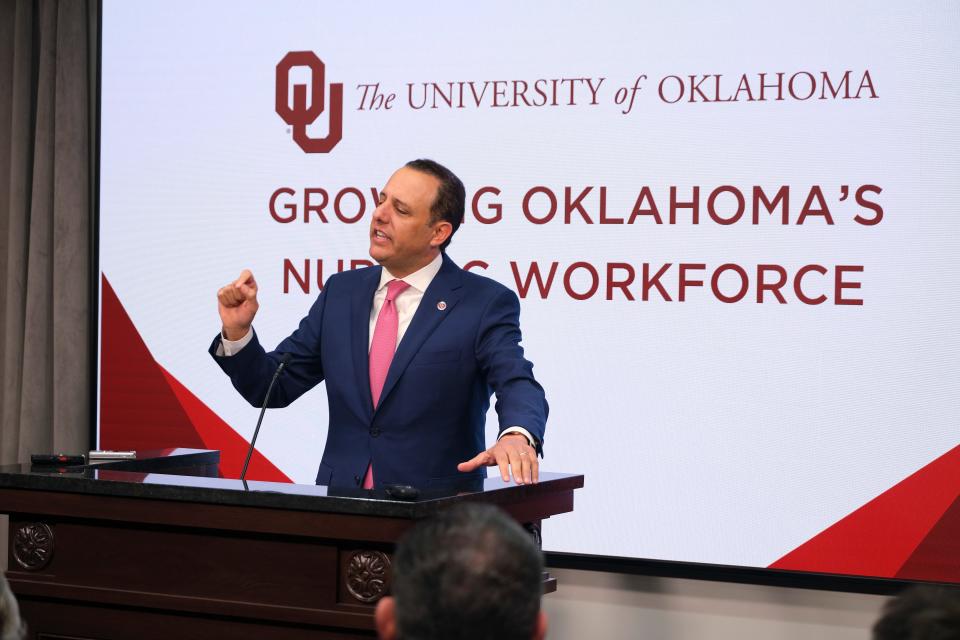Vital signs: Oklahoma's health care industry growing, providing thousands of jobs

- Oops!Something went wrong.Please try again later.
Health care is a growing industry for Oklahoma, with the number of jobs increasing right alongside investment in the system.
Significant expansions are coming for some of the state's largest hospital systems, while other initiatives are in place to combat a workforce shortage.
Gov. Kevin Stitt said in his 2023 State of the State speech that since he became governor, there has been more than a billion dollars invested into the health care system.
"At the same time, we demanded better for Oklahomans and implemented reforms to focus on improving health outcomes, not just billing for procedures," Stitt went on. "As a result, another $700 million is on the way to improve rural hospitals and expand primary care across Oklahoma."
Upcoming expansions for Oklahoma hospitals, health care industry
Set to open this fall, Mercy is building a new women’s and baby center that will connect to its Oklahoma City hospital.
The 175,000 square-foot building will feature an emergency obstetrics department, postpartum rooms, as well as the state's first hospital-based low intervention birthing unit. The building was said to be a $98 million project when it broke ground in 2021, 40% of which was donor funded.
A new heart center is under construction on Integris's Baptist Medical Center campus, and expected to be complete in 2024. The Integris Heart Health Hospital will be a 209,000-square-foot building with 64 ICU beds, multiple cardiac catheterization labs, cardiovascular operating rooms, hybrid operating rooms, electrophysiology heart labs, and convenient cardiac diagnostic testing areas.
More: Oklahoma lawmakers say CVS Caremark is 'intentionally lying' about 90-day prescriptions
Located at the corner of N Porter and E Robinson in the Norman Regional Healthplex, the new cancer center will open in 2025 and is touted as a way to bring top-of-the-line cancer treatment to people beyond Oklahoma City.
For now, Stephenson Cancer Center is Oklahoma's only facility with a National Cancer Institute designation, giving its patients the opportunity to participate in clinical trials of promising new treatments.
Richie Splitt, president and CEO of Norman Regional Health System, said in January it's a "big dang deal" in the world of cancer care.
OKC regional biotech 'supercluster' to spur innovation and economic development

Last September, a $35 million grant was awarded to the Oklahoma Biotech Innovation Cluster Initiative — a group consisting of the Greater Oklahoma City Chamber, the University of Oklahoma and the Oklahoma City Innovation District — to bolster the region's biotechnology, building a "supercluster" between Norman, Oklahoma City and Stillwater.
These projects will not only put Oklahoma at the forefront of biotechnology research and production, but "create new job opportunities for diverse populations across the region, a central goal of this initiative," said Chickasaw Nation secretary of state Bill Lance.
The grant, part of the U.S. Economic Development Administration's Build Back Better Regional Challenge, will fund six projects:
Development of 10 translational research labs dedicated to drug discovery within the OU Health Stephenson Cancer Center.
Supportive programming, known as "Oklahoma Biotech Startup Program," to build a vibrant regional biotech startup pipeline led by the University of Oklahoma.
Create an OU Biotech care facility to provide advanced bioprocessing equipment and services to instructors and researchers at OU, local nonprofits, including the Oklahoma Medical Research Program, and private companies, including Wheeler Bio.
Create the OU Health Stephenson Cancer Center early phase clinical trial network, doubling the size of the existing clinical trial program at OU Health Stephenson Cancer Center.
Create the Biomanufacturing Workforce Training Center, housed in the Oklahoma City Innovation District, to meet the growing demand for skilled labor in the biotech industry and enable the formation of inclusive, non-degreed career pathways into high-wage jobs.
Oklahoma Bioscience Cluster Initiative, which will lead regular convenings of industry leadership, conduct needs assessments, encourage regional connectivity and spur policy advocacy.
“This exciting initiative unites our region’s brightest minds in biotech, and we are grateful that it will leverage OU research expertise to develop life-changing solutions while also fostering economic prosperity for our state," University of Oklahoma President Joseph Harroz Jr. said in a September news release.
More: ‘My baby's not gonna make it and neither am I’; Women flee Okla. for life-saving abortions
Health care industry an important part of Oklahoma City's economy
What do these kind of investments mean for the economy?
A 2021 analysis by the Greater OKC Chamber found that the health care industry represented 9% of total GDP for the Oklahoma City metro and generated an estimated $6.3 billion annually in direct output of goods and services. In 2022, the chamber said more than 82,000 people were employed in the health care industry, accounting for 11% of all jobs in the OKC metro area.
Specifically in biotech, 21,000 were employed by the industry in 2019, making a total of $1.5 billion in wages, according to the OKC Chamber.
Health care jobs also pay more than others, with an average annual pay of $57,311 in 2021, 15% higher than the average pay across all industries, the chamber's research economist Eric Long said.
"Employees in Oklahoma City’s health care cluster average $7,300 more per year than others in the private sector," Long said in 2021. "This highlights the growth opportunities available to those interested in a career in health care."
Initiatives to shore up health care workforce

Though the jobs pay well, it's no secret that a health care worker shortage exists.
Oklahoma was ranked 46th in the nation for nurses for capita before the pandemic, and the scarcity was only exacerbated by COVID-19.
Efforts to shore up the workforce include OU College of Nursing accepting all eligible applicants through at least fall 2023. The college also introduced other measures including a nursing degree accelerator program, as well as adding Norman Regional Hospital and Duncan Regional Hospital to the locations students can complete its BSN program at.
OU Health announced in 2021 some pay bonuses for current nurses, as well as some incentive programs like a weekend nursing program and an option to get higher pay in lieu of benefits.
This article originally appeared on Oklahoman: Oklahoma health care industry growing, providing thousands of jobs

